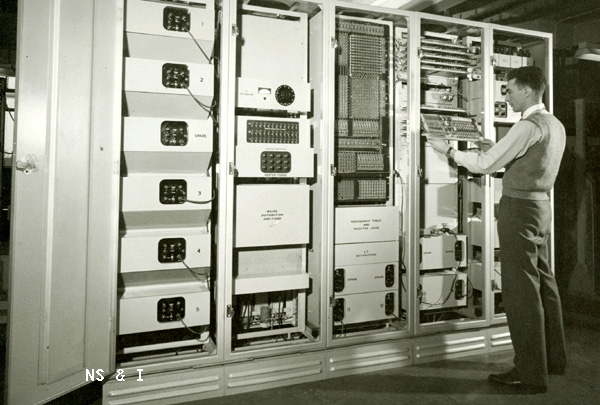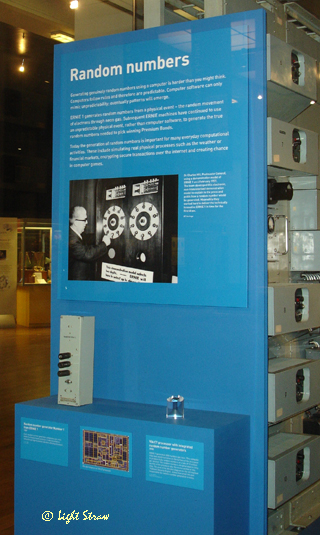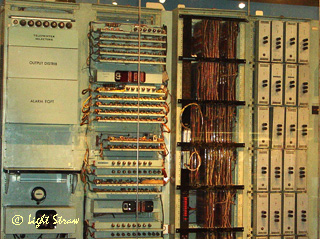 |
ERNIE Mark I was the first large-scale use by the Post Office of transistors, rectangular-hysteresis-loop ferrites and printed circuit board techniques. |
ERNIE is fitted onto five double-sided Post Office telephones racks which are bolted together and mounted on a plinth. Prior to 1960, Post Office equipment racks were painted 'battleship grey'.
This extract from a research document from 1958 explains the principle:
"The machine which has been designed to generate the list of random numbers for the monthly draws of Premium Bonds is known as the Electronic Random Number Indicator Equipment or ERNIE. It uses the random voltages generated at the terminals of cold-cathode tubes as its primary source of random events, two such sources contributing to each character of the nine-digit number provided by the machine. The complexity of the machine arises from the need to avoid any correlation between the digits of each number or between the numbers themselves. The high degree of reliability demanded of the machine and the speed of operation required of its counters is such that special core/transistor circuits had to be introduced on a fairly large scale although other parts of the machine use more conventional techniques. The output of the machine is fed to page printing teleprinters since although ERNIE can operate at much higher speeds than those required for teleprinting, no other suitable printer is commercially available in sufficient quantity at an economic price and with the same reliability."
Random Numbers
 |
Random Numbers: |
 |
|
 |
A detailed look at some of the equipment. |
Disclaimer: These pages are an unofficial review of ERNIE and Premium Bonds. Photos copyright Light Straw Archives, as marked. Other photos and images used with kind permission of National Savings and Investments (NS & I). With thanks to the Science Museum, NS & I, and BT Heritage.
If you have a query about money or bonds held in National Savings, please visit the National Savings and Investments site.
All logos and trade marks are the property of their respective owners and are used on the Light Straw site(s) for review only. Students and researchers are recommended to make their own independent enquiries as to the accuracy of the information contained therein.